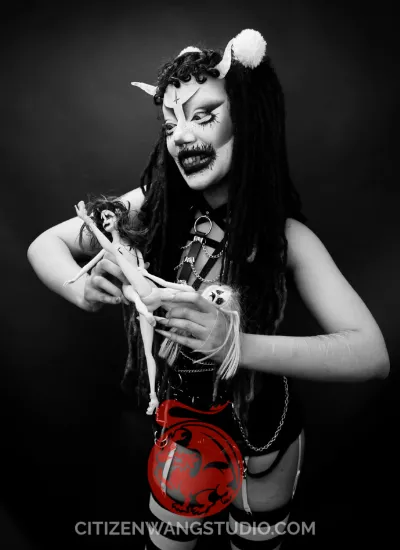THE UNEDITED EYE
Bruce Wang Citizen Wang Studio
Article By Naomi Elfred-Ross @ citizenwangstudio.com
The Unedited Eye.
I first met Bruce at an arts project in Haringey, where he had been enlisted as official photographer, to promote the social enterprise and I was running the art group and serving up flat whites. After a few publicity shots, en plein, with yours truly, Bruce invited me to his studio to sit to have my portrait taken. I had no idea what to expect and wondered what he had seen in me, that had sparked interest. I accepted the invitation, both flattered and curious.
Upon arriving at Bruce’s Barnsbury flat, I was struck by walls lined with black and white portraits of an assortment of people. Then, bookcases, stacked with glossy exhibition catalogues and periodicals. When the moment came to have my picture taken, I froze. Suddenly, I felt extremely vulnerable and I feared the camera would capture this for all to see. We all have a self we wish to project to the world and that which we try to protect and hide. I wanted to go home, but managed to stay. In fact, I returned a number of times. So what is it that prompted my return? I think I was searching for something important, something I wanted to be seen.
When I look through Bruce’s extensive journey through photographic portraiture, it strikes me that I am not alone in my searching. There is a wish to see and be seen. Some photographers and certainly the world of Instagram and Snapchat subscribe to the narcissistic desire of presenting an ‘ideal’ self to the world, however Bruce’s portraits are beautifully uncompromising and unedited; what we see is what is seen through the view finder. Of course, there is studio lighting and the option of props, but nothing that might hinder the intention to find true connection in a world of disconnect. Bruce’s Outpost Gallery exhibitions of 2017/19 (‘Eye of the Beholder’ and ‘About Face’) display portraits of a diverse range of sitters. These are people he may have known personally, or may have sparked interest through connecting on social media. Bruce invites strangers to his home, immediately reaching out with a message of trust. He is most interested in individuals on the periphery of society, giving them a moment of limelight. Bruce’s work is interested in the subtlety of changes in expression; taking multiple shots, hoping to capture that moment of vulnerability, when self consciousness is forgotten momentarily. These images are so detailed each pore and fine line can be observed. During this period of Bruce’s work, I have seen him experimenting in all sorts of ways. It rather feels like a series of sketch books, giving valuable insight into the artist’s process. Bruce is learning about himself, about what speaks to him and excites him the most.
The body of work that Bruce is, perhaps, best known for is Drag Kings. This extensive series emerged quite by accident, as is often the way. He was visited by a sitter, presenting themselves initially as the person the world sees each day. However, she then came alive, as the camera liberated her to take on her ‘alter ego’ role, Dick Head. Kings of Drag books 1-5 lead one to consider identity and question whether it is the role we assume as acceptable to the world our true self or is it the one revealed to our closest friends or only ourselves? Or, is the costume and performance a place to hide and protect true vulnerability? Maybe all of this can be true; life is full of contradiction. What is apparent is that, as his sitters came alive and performed for the camera, without inhibition, Bruce’s confidence in his art grew exponentially. He is clearly enjoying himself, as much as the sitters and this liberation brought with it a maturity to his technique. Lighting and composition enhance the drama, the introduction of colour celebrates the flamboyant costumes and the unflinching attention to detail, as the viewer is allowed to see the humanity beyond the performance. These sitters are not ‘other’, as society might have us believe; within the other, one cannot avoid seeing oneself.
As business as usual has been impossible, during the restrictions of the pandemic, Bruce’s work has developed into a new phase. Unable to invite models to his home, Bruce has taken the bold step of turning the camera inwards. It is Bruce’s moment to be seen. These photographs beautifully portray the subtlety of mood change, seen through facial expression and poise, which is captured in a split second. There is a sense of performing for the camera, as with the Kings of Drag. Possibly, this is an attempt to seek control over what is seen. My interest, however, lies more in the ‘negative space’ or ‘shadows’; what Bruce is giving away of himself unknowingly, which he still permits us to see, as it remains unedited. In Bruce’s face I recognise my own experience of these intensely strange times. I see a wish to reach out and touch, when this is otherwise not permitted. I see warmth, fragility, humour, fear and aloneness. I see hair grow, shadows emerge and disappear. For me, these are Bruce’s most daring and startlingly honest images of his career thus far. Through sharing himself, in such a way, I am sure mine isn’t the only life to have been touched.
Naomi Elfred-Ross